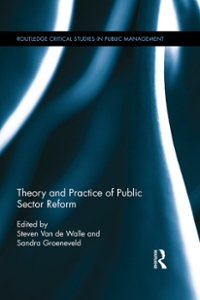Question
Explain the Profit Maximization and flow of money below using economic terminology, economic logic, and economic reasoning 1. Profit Maximization The main objective of any
Explain the Profit Maximization and flow of money below using economic terminology, economic logic, and economic reasoning
1. Profit Maximization
The main objective of any business in a market economy is profit maximization. That is, the people running a business want to operate it in a way that yields the largest difference between revenues and costs. True, a business might have all sorts of goals, including providing jobs for the local population, giving the lazy son of the founder something to do, or being a socially responsible corporate citizen. But any business must try to make a good profitdefined as the difference between the revenue of the business and its total cost of productionor it will have trouble surviving in a competitive world.
Profit maximization is shorthand for "trying to produce something with the biggest difference between the costs and what someone is willing to pay." In the real world, maximizing the profit of a business is difficult. Running even a small business requires a multitude of large and small decisions. Managers have to deal with a constantly changing world, tough competitors, tougher employees, machines that break down, products consumers don't want to buy, corporate scandals, and natural disasters.
Businesses in the United States make a very wide range of profits. For example, Apple reported $48 billion in profits in 2018. That same year, many businesses large and small reported lossesthat is, their costs exceeded their revenues. For example, the electric car company Tesla lost $1 billion in 2018 as it ramped up production of its new Model 3.
The difficulty of consistently producing a good profit is the reason successful chief executives of large corporations get paid so handsomelyand it is also why the typical CEO lasts only 5 years in their job.
Of course profit-maximizing businesses are not the only source of production because there are productive enterprises with other goals. Private universities and hospitals, for example, are sometimes set up as nonprofit organizations, which means they focus on providing useful services to society rather than maximizing profit. Similarly, governments are not profit-maximizing, but they provide services, such as sanitation, national security, and education. And most child care activities are still done by parents or other household members; most families are not run as profit-making enterprises.
------------------------------------
2. The Flow of Money
In a market economy, a business does not simply produce outputs using inputsit also collects and spends money. Revenue is the money a business receives from the sales of its outputs to customers. Cost is what the business pays for its inputs.
For example, in the year ending June 30, 2019, Procter & Gamble received roughly $68 billion in revenues for all the toothpaste and other products it sold. The company's expenses during that period were roughly $62 billion, which were used to pay its workers, build and maintain its factories, and purchase raw materials, such as steel for its razors and plastic for its shampoo bottles.
Profit is the difference between revenues and costs. Procter & Gamble reported a profit, before taxes, of about $6 billion, which was the difference between its revenues ($68 billion) and its costs ($62 billion).
On a smaller scale, your favorite restaurant collects revenues from customers paying for meals, and it uses that money to pay its workers and suppliers. With any luck, revenues will exceed costs, so the restaurant will make a profit and be able to stay in business
Step by Step Solution
There are 3 Steps involved in it
Step: 1

Get Instant Access to Expert-Tailored Solutions
See step-by-step solutions with expert insights and AI powered tools for academic success
Step: 2

Step: 3

Ace Your Homework with AI
Get the answers you need in no time with our AI-driven, step-by-step assistance
Get Started


